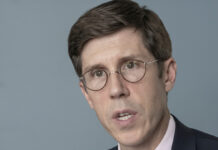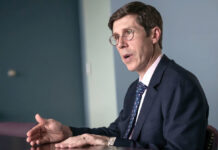The inconclusive August jobs report might not provide the Federal Reserve with the impetus it needs to take interest rates higher in the near future. That’s particularly true since by some important measures, the economy still isn’t quite back to where it was even at the beginning of earlier tightening cycles.
The employment report portrays an economy still growing at a steady but subdued pace. Nonfarm employers added an estimated 151,000 jobs, bringing the three-month average to 232,000 — more than enough to compensate for natural growth in the labor force. The unemployment rate held steady at a historically low 4.9 percent. Average hourly earnings were up 2.4 percent from a year earlier, a relatively slow rate that suggests demand for workers is still not outstripping supply.
When Chair Janet Yellen spoke last week at the Kansas City Fed conference in Jackson Hole, Wyo., she indicated that she wanted to see solid job gains to confirm that the economy can keep growing with less monetary support, a bar that the August data may or may not meet. That leaves open the question of whether officials will go ahead with a 0.25-percentage-point increase in the Fed’s target interest rate at their next policy-making meeting later this month. Futures markets suggest that the odds of a rate hike — which would be the second increase after a similar move in December — have declined.
For all the Fed’s signaling that it wants to raise rates, not all the evidence on the state of the job market and the economy supports such a bias. True, unemployment is very close to what economists see as its so-called natural rate, the level beyond which inflation tends to become a problem. Yet other key indicators still fall short of where they were the last three times the Fed made its first move in a cycle of interest-rate increases.
Consider the share of people in their prime working years (ages 25 to 54) who have jobs. As of August, it stood at 77.8 percent. That’s 2.3 percentage points short of the pre-recession average — a gap of 2.9 million jobs. Ahead of the previous three tightening cycles, on average, the prime-aged employment-to-population ratio was already above its pre-recession level.
Inflation, too, is still below the Fed’s 2 percent target. In the three months through July, the central bank’s preferred measure of inflation — the price index for personal consumption expenditures, excluding volatile food and energy — increased at an annualized rate of 1.6 percent. Compare that with the 2.6 percent average at the start of the previous three rate cycles.
Given the uncertainty, why would the Fed go ahead? Some would say that prime-age employment will never return to its pre-recession average, because too many people have lost the skills and motivation they need to get back to work. Others argue that the central bank must move, for fear that a prolonged period of very low interest rates will prompt investors to take on too much risk, threatening financial stability. Still others would say that the Fed is making a mistake, focusing too much on unemployment and not enough on getting inflation back to target.
For Yellen and her fellow Fed officials, it will be a tough call.












